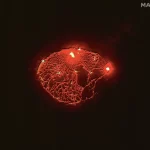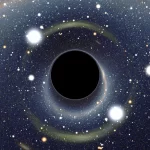Key Takeaways:
- Scientists discovered a unique system of six planets around the star TOI-178, exhibiting an extraordinary rhythmic harmony in their orbits.
- Originally spotting three planets through NASA’s TESS, further analysis with instruments like CHEOPS revealed six planets, five of which move in synchronized orbits.
- This system challenges previous understandings as it showcases an unusual mix of planets, ranging from terrestrial to gaseous compositions.
- Observations revealed these planets vary in size, from 1.1 to 3 times the size of Earth, with diverse densities, blurring the line between rocky super-Earths and gassy mini-Neptunes.
In a celestial spectacle, six alien planets have been found engaged in a mesmerizing dance of orbital synchronization around a distant star known as TOI-178. Scientists, utilizing data from NASA’s (TESS), initially identified three planets orbiting TOI-178. Upon closer examination, these planets revealed a rhythmic coordination in their orbits, prompting further investigation into the system’s celestial harmony.
The system, named TOI-178 (TESS Object of Interest), unveiled its hidden secrets as astronomers delved into the TESS data. Surprisingly, the researchers discovered not three, but six planets in this exotic system, five of which exhibited a fascinating orbital synchrony. This synchronized dance is an unprecedented phenomenon, defying the typical patterns observed in such systems.
Kate Isaak, the project scientist for the European Space Agency’s Characterizing Exoplanet Satellite (CHEOPS), expressed the uniqueness of the TOI-178 system. In contrast to other synchronized systems where planet density decreases with distance from the star, TOI-178 features a diverse mix. The system presents a juxtaposition of a dense, Earth-like planet adjacent to a less dense, gaseous planet with half the density of Neptune, followed by another planet akin to Neptune.

The journey of discovery commenced when scientists, inspired by TESS data indicating an unusual orbital rhythm among three planets, enlisted additional instruments, culminating in twelve days of observations with the CHEOPS telescope. Initial observations indicated five planets orbiting TOI-178 at intervals of 2, 3, 6, 10, and 20 days. However, an apparent gap in the sequence hinted at the presence of another planet with a 15-day orbit.
A near-miss encounter with space debris almost jeopardized the crucial observations by CHEOPS. Despite the tense moment, the satellite successfully resumed observations, capturing the passage of the mysterious 15-day orbit planet. This event confirmed the existence of six planets within the TOI-178 system.
Interestingly, the innermost planet in the system follows a distinct orbital rhythm, while the outer five planets harmoniously complete their orbits in synchronization. The outer planets create a complex rhythm: as the outermost planet completes one orbit, the next completes 1.25 orbits, followed by two loops, three orbits, and six orbits. These occasional planetary alignments contributed to the initially puzzling rhythm in the TESS data.
Beyond the discovery of additional planets and unraveling the intricacies of their orbital dance, scientists also examined the characteristics of the planets themselves. Ranging from 1.1 to 3 times the size of Earth, the planets exhibited diverse densities, blurring the lines between rocky super-Earths and gaseous mini-Neptunes.
The researchers speculate that more planets might follow the established orbital alignments within the TOI-178 system, requiring extended periods of observation for confirmation.


